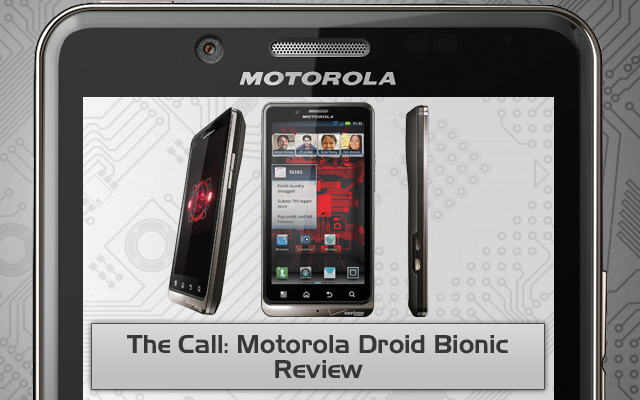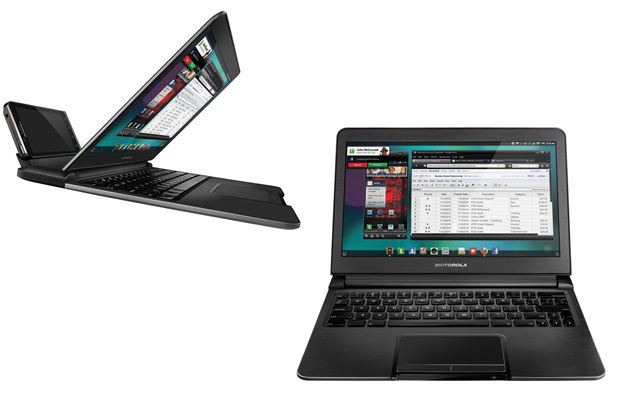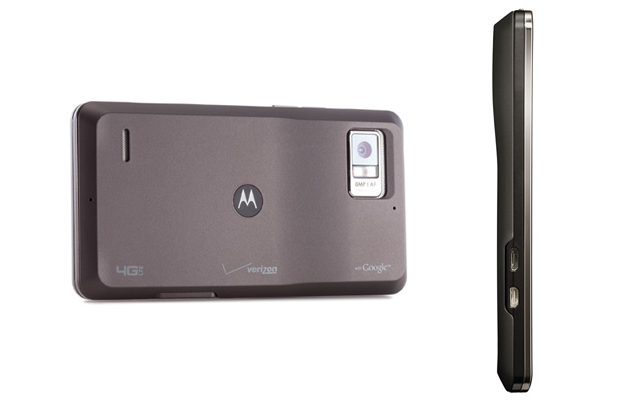
Motorola Droid Bionic
MSRP: $299.99 (w/two-year contract), $589.99 (standalone)
Carrier: Verizon
Key Specs: 4.3-inch PenTile display, 1GHz TI OMAP4430 dual-core processor, Android 2.3 OS (Gingerbread), dual cameras, 1080p HD video capture, LTE- and DLNA-enabled, 8GB internal memory, and 1GB of RAM.
The 2011 Consumer Electronics Show was the first time we caught a glimpse of what Motorola billed as the “most powerful” Android phone to hit the market this year: the Droid Bionic. Laced with a dual-core processor, 4G service, and Google’s newest Gingerbread OS—it seemed like the latest member of the Droid family was ready to muscle its way onto the mobile scene last spring. Then the manufacturer unexpectedly delayed the device till late summer, citing that it wanted to build on “expanded features, functionality, and an improved form factor.” So nine months after the media had its official hands-on with the handset, has Motorola lived up to its word and birthed the most dynamic Android smartphone ever built? For now that is…
High-Powered Goliath
Why Motorola chose to tackle the dual-core 1GHz TI OMAP4430 processor instead of NVIDIA’s popular Tegra chip is still a mystery to us. But the decision pays off, as the chip generates faster command speeds and does an incredible job of multitasking. Apps, widgets, and web pages open immediately, while screen navigation, documents, and media files launch just as quick. Videos, along with the frame rate on most 2D games run smooth as well. Best of all, we had a lag-free experience, as the CPU was able to handle up to 8 apps running in the background without causing any slow down. Guess Motorola was right.
‘The Flash’ of All Android Phones
We’re accustomed to the lightening fast speeds that Verizon’s LTE network delivers, but the megabyte-per-second ration on the Droid Bionic is absolutely ridiculous. On an average, the HTC Thunderbolt and Samsung Droid Charge pull a good 10 to 15Mbps. The Droid Bionic: 18 to 24Mbps. Insane. When using the preinstalled Speedtest.net app, benchmarks ranked high throughout the Tri-State area as the device reached peak data speeds of about 28Mbps in certain areas of New York City. Android Market apps downloaded in a matter of seconds and Netflix videos streamed instantaneously.
The Ultimate Accessories Phone
If you’re a sucker for add-ons, then the Droid Bionic offers more than enough to fill your appetite. As seen with the Atrix, Motorola welcomes a Lapdock that can transform the Bionic into a mobile laptop with web browsing and document editing capability. Attach the phone to the back of the dock and watch it run on Webtop Mode, which provides access to a number of productivity and social media apps: including Google Docs, DropBox, Facebook, and the cloud server-based SugarSync. In addition, Motorola is offering an HD station, battery dock, vehicle navigation dock, web application adapter, wireless keyboard, and several other accessories online and in-store.
Weak Battery and Expensive Price Tag
No one Android should have all that power, and speed. Why is that? The tradeoff of having such a high-performance device, which in the case of most Android phones, is its inability to hold a charge. Moto’s website has the 1,730mAH lithium ion battery promising up to 10 hours of continuous talk time, yet we only pulled a mere 6 hours on limited use. Yet strangely enough, we found ourselves conserving more energy when using the phone as a mobile hotspot. But in all fairness, every reviewer has had a different experience with the battery.
Also, budget breakers need not apply, as the device sits one step below the iPhone 4S (64GB) as Verizon’s most expensive smartphone. And considering the competitive pricing from other big-league Android handsets on the network such as the Droid Charge and LG Revolution, mobilephiles might be compelled to look elsewhere to fill their high-speed addictions.
The Call
Truth be told, the Droid Bionic is the fastest, most powerful phone on the market. You won’t find another device out there pushing faster data speeds and handling multitasking commands with ease. Moto’s redesign is also a huge facelift from the original, ditching the bulkier form factor for a more opulent, sleeker profile: making it the slimmest 4G-enabled device available. Just know that basking in all that firepower and sexiness comes with a price, a hefty one at that. Still, in the end, Motorola lives up to its bold statement and has created the high-performance beast that Android conformists have long awaited to own.
Pick up the Motorola Droid Bionic at Verizon
















